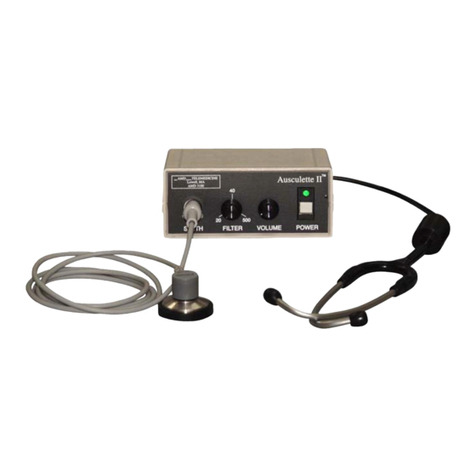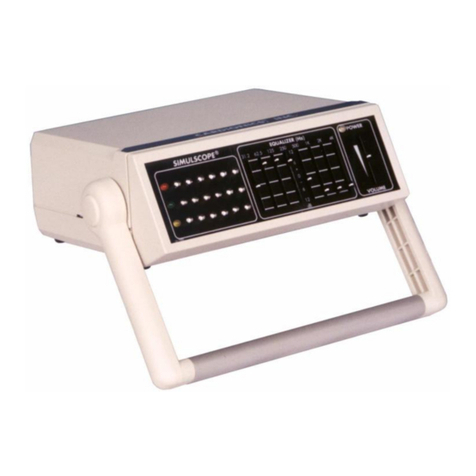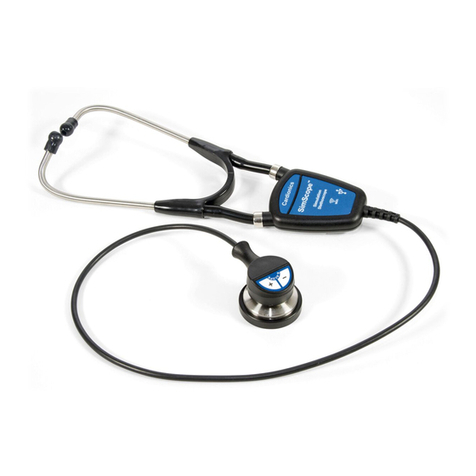
Contents
Page No.
1.0 Product Description ................... ......................................1
1.1 Models and Accessories ...................... ...........4
2.0 Using the E-Scope................. ..........................................8
2.1 general clinical use.................. ........................8
2.2 for teaching.......................................................8
2.3 recording....................................... ...................8
2.4 in telemedicine .............. ..................................9
2.5 other applications ................ ............................9
3.0 Operation..........................................................................9
3.1 Volume Adjust.............................................. .....9
3.2 Filter Select ......................................................9
3.3 Power ..................... ..........................................9
3.4 Battery……………………………………………..10
3.5 Sounds Output…………………………………… 10
4.0 Cleaning ................................ ..........................................12
5.0 Transport and Storage........... ..........................................12
6.0 Troubleshooting guide ..................... ................................12
7.0 Warranty .......... ................................................................13
8.0 Appendix................................................................. .........15
8.1 Recording Techniques ........................... .........15
9.0 Index....................................................................... .........17
List of Figures
Figure 1 E-Scope clinical model...................... ......................2
Figure 2 E-Scope belt model ....................... ..........................2
Figure 3 Wearing the E-Scope ........................ ......................3
Figure 4 Using the E-Scope ...................... ............................3
Figure 5 Headphone, Over the head style. ............................5
Figure 6 Headphone, Behind the head style ..........................5
Figure 7 Specialist Diaphragm .........................................….. 7
Figure 8 Specialist Bell…………………………………………..7
Figure 9 Specialist Pediatric Bell………………..…………...... 7
Figure 10 Accessory Pack……………………………………… 7
Figure 11 E-Scope Stethoscope head...................………….. 9
Figure 12 E-Scope Controls……..........................……………11






























